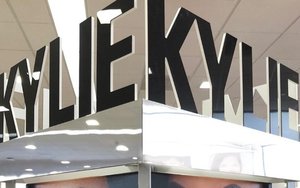
With its brisk brick-and-mortar growth finally
slowing, Ulta Beauty is accelerating its tech game to build consumer engagement and drive sales. And it says the launch of the long-awaited Kylie Jenner line is set to roll into stores in a few
weeks.
The Bolingbrook, Ill.-based beauty retailer also introduced a new brand purpose -- “We bring possibilities to life through the power of beauty” -- which it plans to support
with a new ad campaign, aimed at key growth segments for a more emotional connection with its beauty-loving customers.
Ulta, which has continually impressed observers with its strong results,
posted another set of impressive numbers, with comparable sales growth of 7.8%, higher than initially forecast. Retail comparable sales increased 4.4%, salons gained by 3.3% and e-commerce sales grew
42.2%. (In the same period last year, total gains came in at 10.3%.)
advertisement
advertisement
And in a series of announcements pegged to its Investor Day, the company says it’s acquired QM Scientific and GlamST,
tech startups in artificial intelligence and augmented reality, to help it develop service that’s even more personalized.
Ultra is also investing in Iterate, a digital workflow partner,
and Spruce, an online booking tool. It says it’s lowering the number of stores it plans to open to 80 next year, 75 in 2020 and 70 stores in 2021, with a sharper focus on improving the nearly
1,200 stores in its portfolio.
Ulta currently has about 7% of the $87 billion U.S. beauty products market, writes Mike Baker, an analyst who follows Ulta for Deutsche Bank, in his latest
report. “It has been gaining roughly 1% per year," with gains expected to continue, and about 9% of sales exclusive to Ulta. Baker thinks the addition of the Kylie Jenner line, with products
selected by the young cosmetics mogul herself, “will help attract new customers and paves the way for other digitally native brands.”
Still, he rates the company a hold, not a buy,
based on valuation and market challenges. “We see the biggest downside risk being increased online competition as well as slowing square footage growth,” he says. ‘To the upside, we
see risks from increased penetration of newer products, which could lead to higher-than-expected market share gains.”